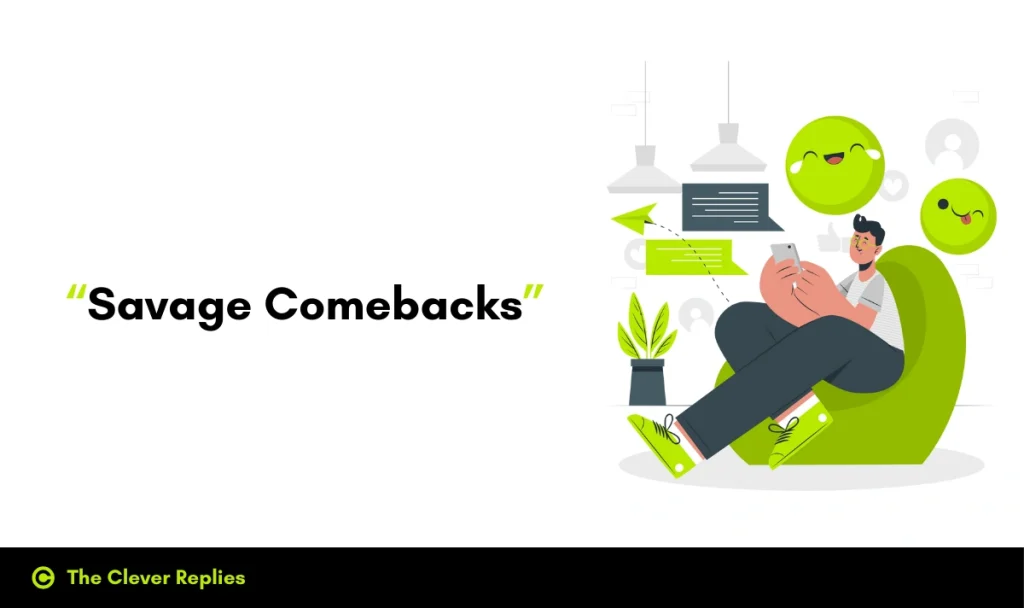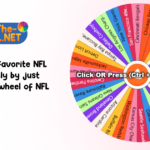Introduction
Roasting someone is more than just throwing insults — it’s an art form that mixes humor, wit, and confidence. A savage roast isn’t about being cruel; it’s about being clever, bold, and entertaining. Whether it’s a playful jab between friends or a quick verbal comeback online, mastering the art of the roast can make you stand out as someone sharp and confident.
But there’s a fine line between funny and offensive. The best roasters know how to make people laugh, not cry. A well-crafted roast hits hard, lands fast, and leaves everyone smiling — including the person being roasted. This guide will show you how to write and deliver savage roasts that are funny, smart, and respectful, while keeping your reputation strong and your humor sharp.
What Is a Savage Roast?
A savage roast is a witty, fearless insult that sounds harsh but is ultimately humorous. It’s not meant to hurt feelings — it’s meant to entertain. Think of it as a verbal punchline: quick, clever, and full of attitude.
Roasts have been around for decades, popularized in comedy clubs and “roast shows” where comedians jokingly mock celebrities. Today, roasting has moved into everyday life — in friendships, social media, and even workplaces. A good roast shows intelligence, confidence, and timing. It’s not about tearing someone down but showing you can think fast and make people laugh.
The word “savage” simply means bold and unapologetic — so a savage roast is a bold, brutally funny comment delivered with charm and control.
Why People Love Roasting
1. It Builds Connection
When done right, roasting strengthens bonds. Friends often roast each other to show comfort and familiarity. It’s a way to say, “We’re close enough that I can joke with you.”
2. It Shows Intelligence
A smart roast reveals verbal agility. The more creative the burn, the more people admire your quick thinking.
3. It Keeps Conversations Fun
Roasts inject humor into ordinary talk. They keep things light-hearted and spontaneous, making interactions memorable.
4. It Boosts Confidence
Knowing you can roast and respond to one builds self-assurance. It helps you stay cool under pressure, especially in social settings.
5. It’s a Cultural Staple
From TV shows to TikTok, roasting is part of modern humor. People enjoy clever comebacks — as long as they’re delivered in the right spirit.
The Golden Rule of Roasting
Roast to amuse, not abuse.
The best roasts are creative, not cruel. Avoid topics that target someone’s physical appearance, family, trauma, or personal struggles. Instead, focus on funny habits, exaggerated quirks, or harmless observations.
A roast should make people laugh, not make someone question their worth. Always remember: once humor turns into humiliation, the roast has failed.
How to Write a Savage Roast (Step-by-Step)
Step 1: Observe Carefully
Every great roast starts with observation. Notice small details — the way someone speaks, dresses, or behaves. The best burns come from pointing out something obvious that others missed.
Example:
“You’re like a human alarm clock — loud, annoying, and impossible to ignore.”
Step 2: Exaggerate or Twist
Take that observation and stretch it to a ridiculous degree. Exaggeration is the heart of comedic roasting.
Example:
“You’re so late, time zones move faster than you.”
Step 3: Add Wordplay
Puns, metaphors, and comparisons make roasts more fun and less mean. The cleverer your language, the more people laugh at the creativity rather than the cruelty.
Example:
“You have so many tabs open in your brain that your face froze.”
Step 4: Keep It Short
The shorter the roast, the harder it hits. A one-line roast has more punch than a long explanation. Think of it like a punchline — fast, sharp, and memorable.
Step 5: Deliver It Smoothly
Tone matters as much as words. A confident smile and a playful tone turn even a harsh line into a funny one. Delivery sells the roast.
Step 6: Know When to Stop
If your roast lands and people laugh, stop there. Never pile on or repeat it — that shifts it from funny to awkward. Great comedians know timing is everything.
Examples of Savage Roasts
Here are some ready-made savage roasts you can use or learn from. Use them wisely!
- “You bring everyone so much joy… when you leave the room.”
- “If ignorance is bliss, you must be the happiest person alive.”
- “You have the perfect face — for radio.”
- “You’re like a cloud. When you disappear, it’s a beautiful day.”
- “I’d agree with you, but then we’d both be wrong.”
- “You have so many gaps in your teeth, your tongue needs a GPS.”
- “You’re proof that evolution can go in reverse.”
- “Your secrets are safe with me. I never listen anyway.”
- “You’re the reason Wi-Fi passwords exist.”
- “If you had a thought, it would die of loneliness.”
- “You’re like a software update — always popping up when no one wants you.”
- “I’d roast you, but nature already did.”
- “Your voice sounds like it’s buffering.”
- “You’re the human version of a participation trophy.”
- “You’re not stupid; you just have bad luck thinking.”
Each line balances humor with wit — not cruelty. The goal is to make people laugh, not start an argument.
When to Roast and When to Stay Quiet
Good Moments to Roast
- Among close friends who understand your humor
- During games, parties, or comedy events
- In group chats where roasting is a shared joke
- When someone roasts you first and expects a comeback
Bad Moments to Roast
- When someone’s upset or stressed
- In professional or serious environments
- Around people you don’t know well
- On sensitive topics like body image, health, or family
Always read the room. The difference between a good roast and a bad one is timing and tone.
How to Roast Without Being Mean
- Roast Behaviors, Not Identity
Tease someone’s actions, not who they are.
Example: Instead of “You’re lazy,” say, “You rest so much your bed has separation anxiety.” - Use Self-Awareness
Make fun of yourself too. It shows balance and humility.
Example: “I’d roast you, but my Wi-Fi can’t handle that many burns.” - Keep It Playful
Smile, laugh, and make eye contact — tone shows intent. - Never Go Too Personal
Avoid touching insecurities. If a topic could hurt someone privately, skip it. - End with a Compliment (Sometimes)
Adding a light follow-up can smooth edges.
Example: “You’re impossible to ignore — seriously, that’s your superpower.”
How to Handle a Roast Directed at You
If someone roasts you, don’t take it personally. The best comeback is confidence.
- Laugh it off: Humor diffuses tension and earns respect.
- Roast back: Reply with a quick, clever line.
- Compliment ironically: “You’re really trying today, huh? I’ll give you that.”
- Ignore it: Not every comment needs a response. Silence can be power too.
Remember, roasting is like a friendly boxing match — you’re both in it for fun. No one should leave hurt.
The Ethics of Savage Roasting
Savage humor walks a thin line between funny and disrespectful. Here’s how to stay on the right side:
- Never punch down. Don’t roast people for things beyond their control.
- Don’t gang up. One-on-one roasts are fun; group ridicule feels like bullying.
- Be aware of context. What’s funny in a meme might not work face-to-face.
- Be willing to apologize. If someone says you went too far, take responsibility.
A true master of roasting knows empathy is just as important as wit.
How to Recover from a Roast Gone Wrong
Even experts mess up. If your roast doesn’t land or hurts someone:
- Apologize immediately.
A simple “I didn’t mean that to sound harsh” works wonders. - Laugh at yourself.
Turn the joke back on you to ease tension. - Change the subject.
Shift focus to a lighter topic. - Compliment genuinely.
Remind the person it was all in fun.
Owning your mistake keeps your credibility — and friendships — intact.
Why Mastering Roasting Matters
Learning to roast teaches more than humor. It develops communication, timing, and emotional intelligence. It helps you think fast under pressure, read social cues, and express wit without hostility.
In workplaces or social circles, being funny and confident makes you more approachable. In friendships, it deepens bonds through shared laughter. The ability to roast and take a roast gracefully shows maturity, self-awareness, and charm.
Read More Fun Fortnite Challenges You’ll Actually Want to Try
Conclusion
Roasting isn’t about being cruel — it’s about being clever. A savage roast is sharp, funny, and fearless, but it should always come from a place of playfulness, not pain. The true art of roasting lies in knowing when to speak, how to speak, and when to stop.
The best roasters use humor as connection, not as a weapon. They can turn an insult into laughter, a comeback into confidence, and a moment into memory. With practice, creativity, and empathy, you can master the balance — roasting like a pro while keeping respect and fun intact.
So next time someone throws shade, smile, think fast, and fire back with style. Just remember: real savagery doesn’t need cruelty — only cleverness.
FAQs
Q1. What does “roasting someone” mean?
Roasting means playfully mocking or teasing someone through funny, exaggerated remarks. It’s meant for entertainment, not harm.
Q2. What makes a roast “savage”?
A savage roast is bold, confident, and unexpectedly clever. It’s sharper and wittier than a regular tease, but still good-natured.
Q3. How can I roast without being rude?
Focus on humor, exaggeration, and creativity — not personal flaws. Keep it light and make sure the person can laugh along.
Q4. What should I do if my roast offends someone?
Apologize quickly, clarify that it was a joke, and move on. Respect matters more than any punchline.
Q5. Is roasting good or bad?
Roasting can be great fun if everyone involved understands it’s humor. It turns bad when it becomes personal, repetitive, or hurtful.







